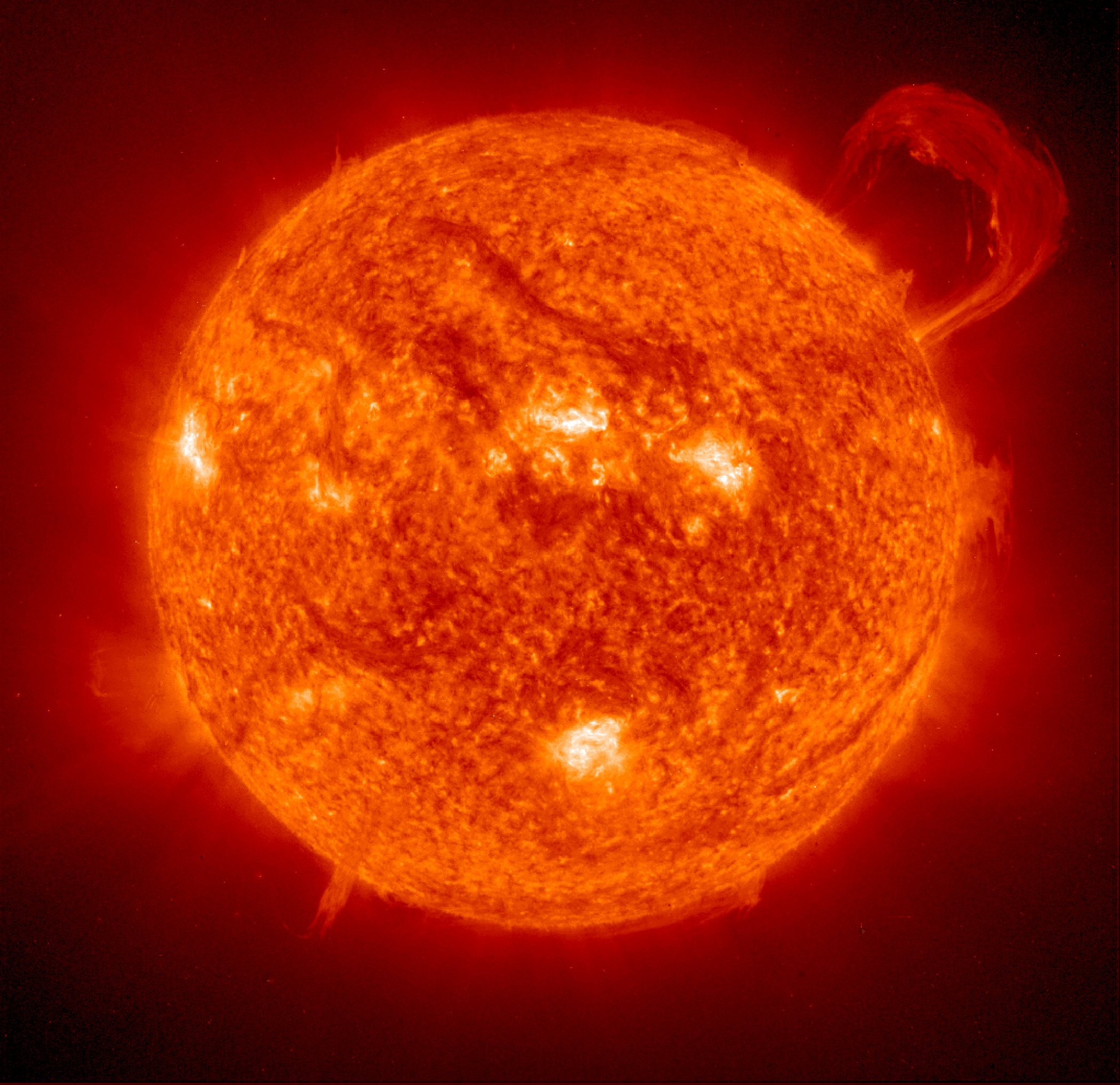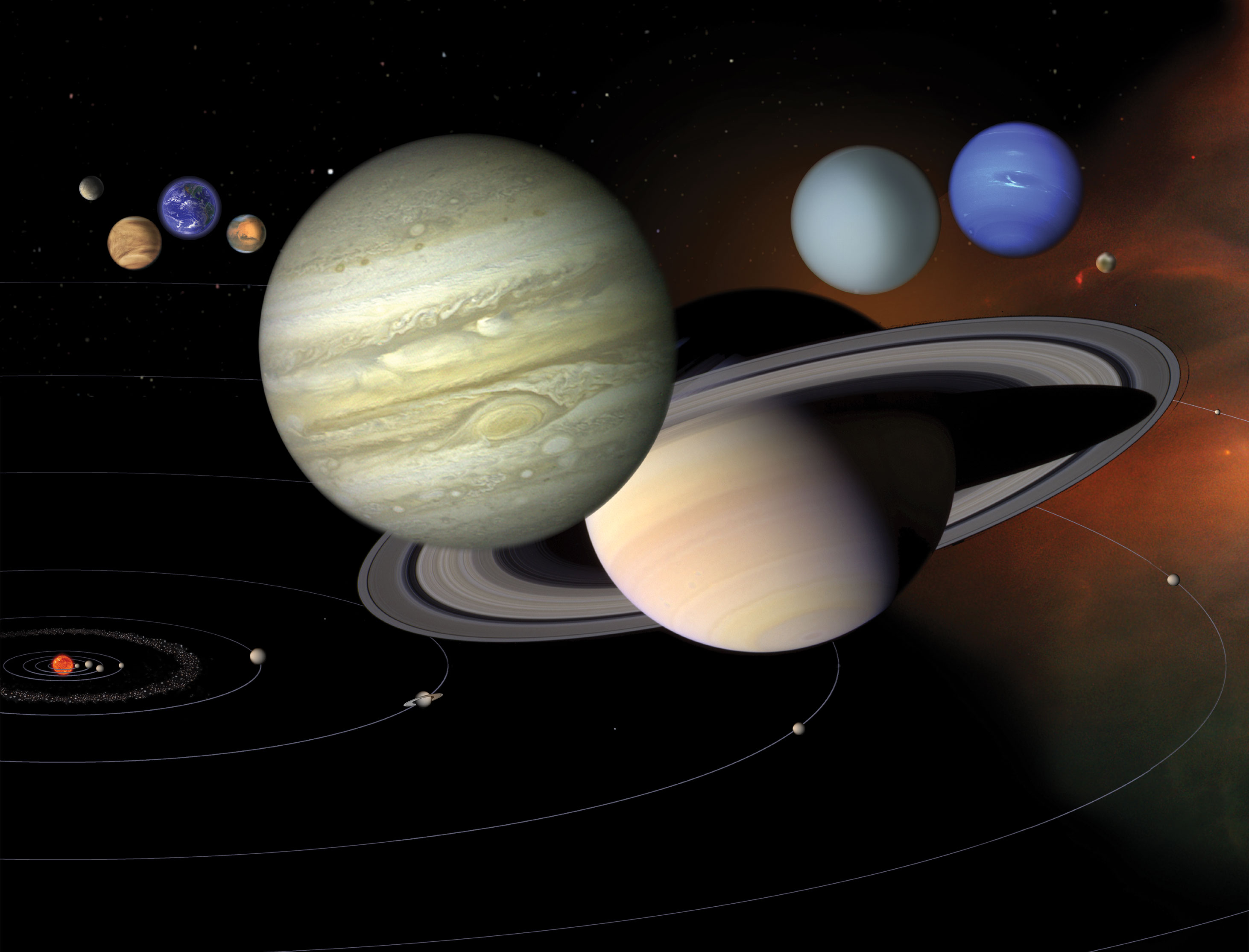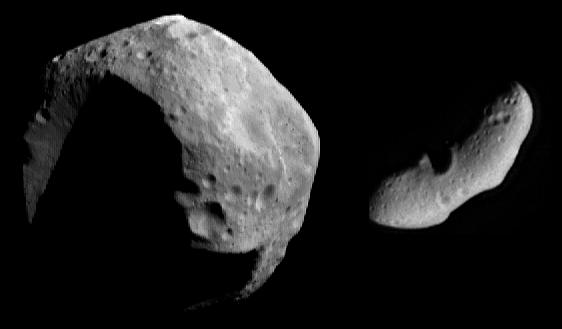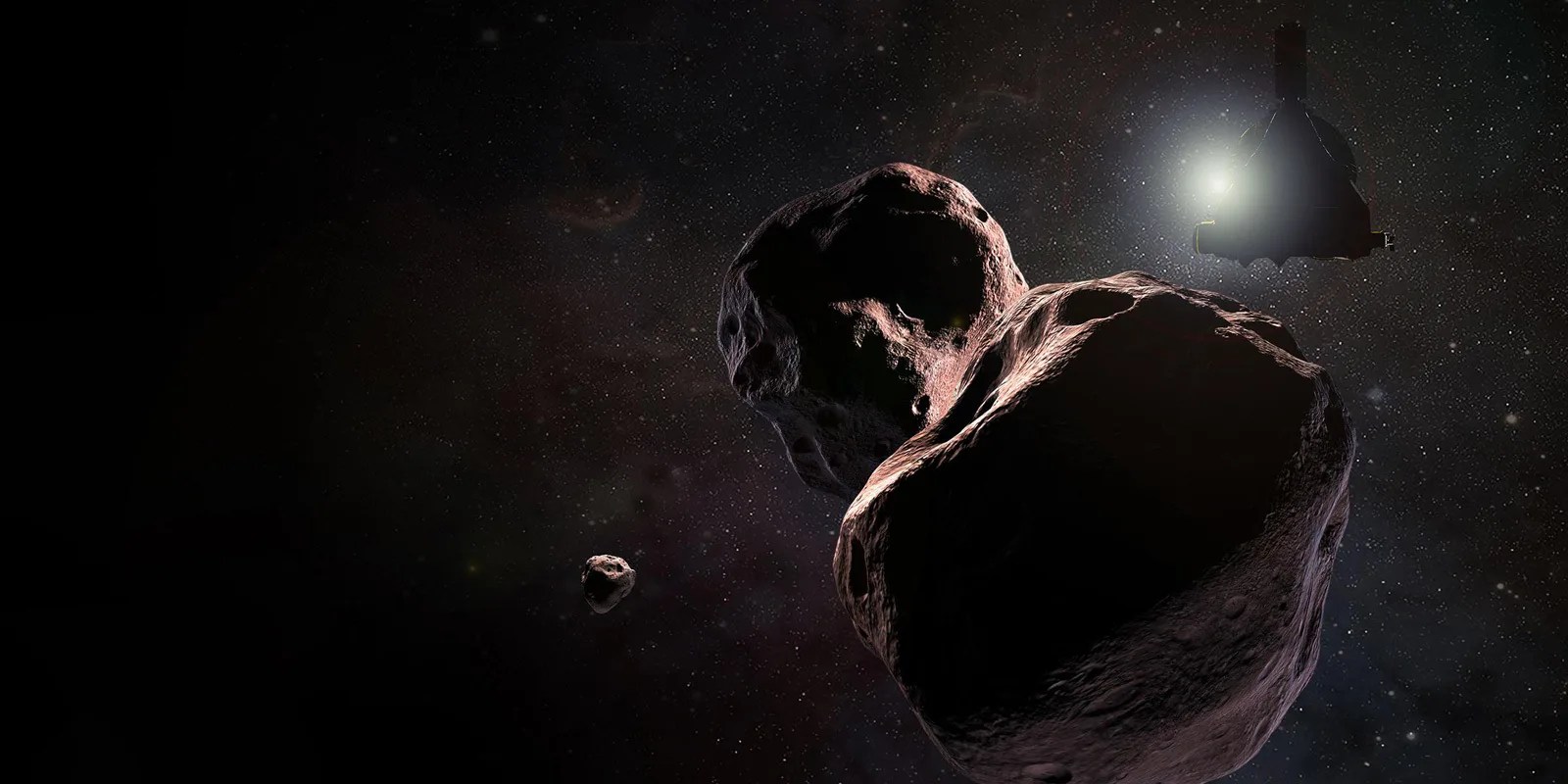Desdemona
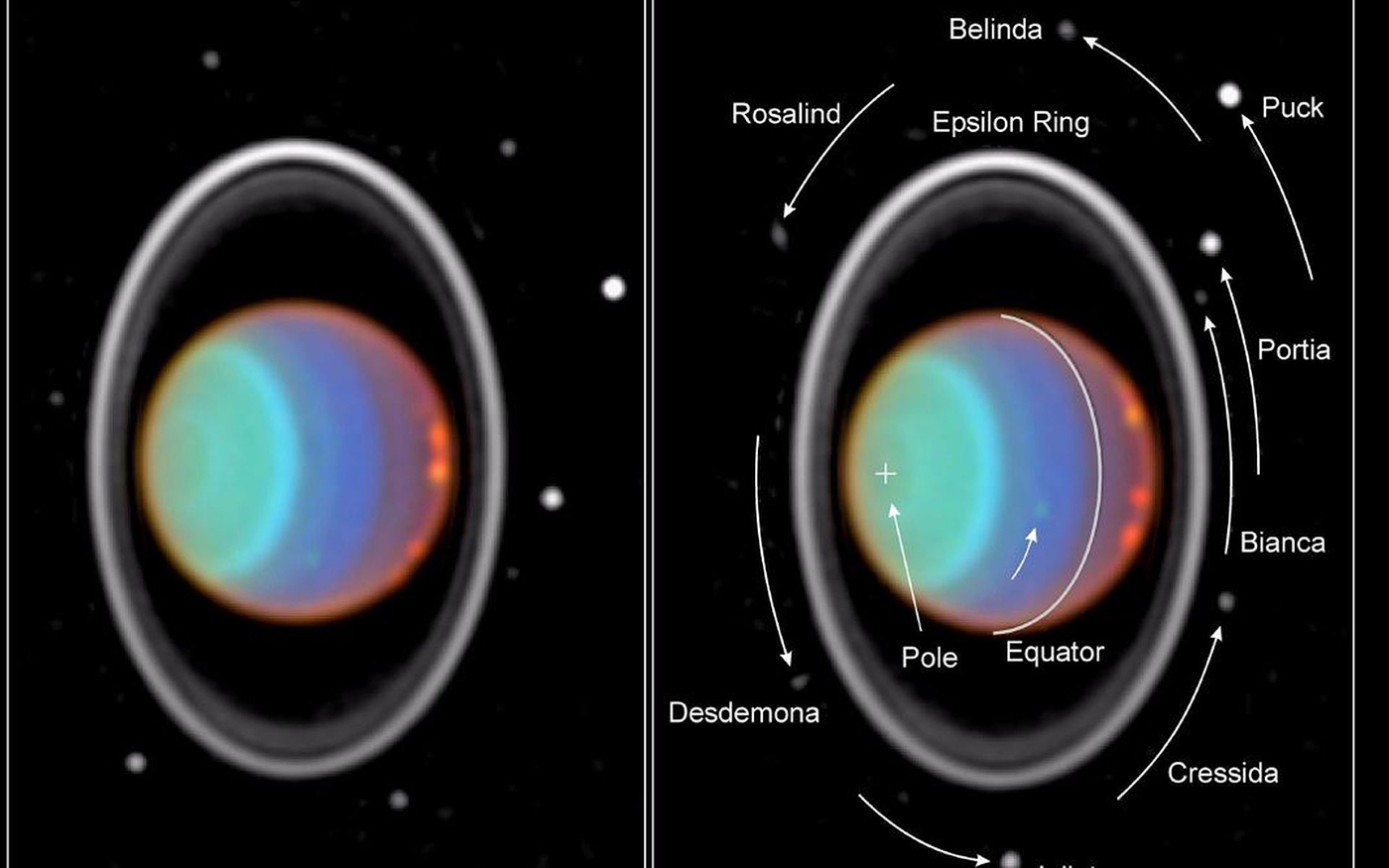
Taking its first peek at Uranus, NASA Hubble Space Telescope's Near Infrared Camera and Multi-Object Spectrometer (NICMOS) has detected six distinct clouds in images taken July 28, 1997. Hubble also captured eight moons in this image.
NASA/JPL/STScI
Discovery
Desdemona was discovered on Jan. 13 1986 in images taken by Voyager 2. It is one of the 10 Uranian satellites discovered by the Voyager science team.
Overview
Desdemona is one of the small, inner moons of Uranus. Little is known about it other than its size and orbital characteristics. Neither its size nor its albedo have been measured directly, but assuming an albedo of 0.07 like Puck, its surface probably consists of the dark, unprocessed, carbon-rich material found on the C-class of asteroids.
How Desdemona Got its Name
Originally called S/1986 U6, Desdemona was named after the wife of Othello in William Shakespeare's play, "Othello, the Moor of Venice." Desdemona is the daughter of a Venetian senator.
Keep Exploring

